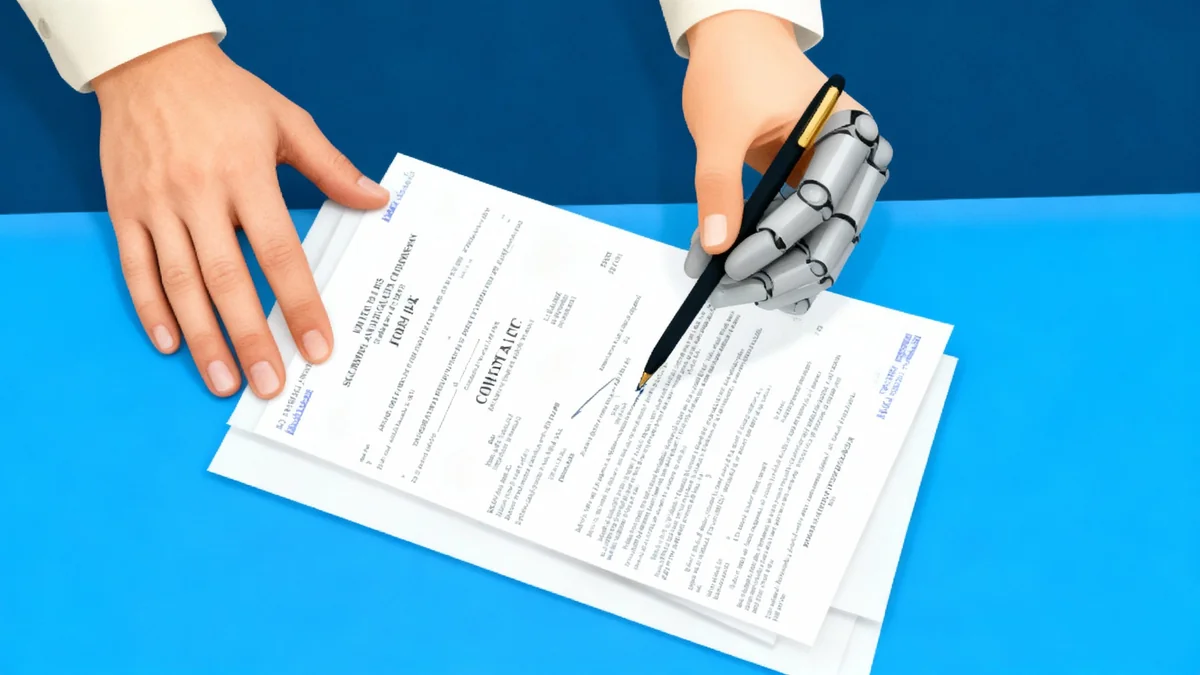JPMorgan Chase, the largest bank in the United States, has introduced an internal artificial intelligence tool to assist its employees in drafting their annual performance reviews. The move signals a significant step in the integration of AI into core corporate functions and reflects a broader trend of automation in the workplace.
The system, part of the bank's proprietary 'LLM Suite,' allows staff to generate initial drafts of their self-assessments and peer feedback based on prompts they provide. This initiative aims to streamline a traditionally time-consuming process for the company's more than 300,000 employees.
Key Takeaways
- JPMorgan Chase is offering its in-house AI chatbot to help employees write year-end performance reviews.
- The tool is intended as a starting point, with employees remaining responsible for the final content.
- This AI system will not be used in decisions regarding salary or promotions.
- The bank is investing heavily in AI, with a dedicated annual budget of $2 billion for the technology.
A New Tool for an Old Task
The process of writing performance reviews is a familiar, and often laborious, part of corporate life. At a company the size of JPMorgan, with a global workforce exceeding 300,000, the cumulative time spent on these evaluations is substantial. The new AI tool is designed to reduce this burden by offering a shortcut.
Employees can input key achievements, project details, and other relevant information as prompts. The bank's large language model then synthesizes this data into a structured narrative, which can be edited and refined. Company guidance emphasizes that the AI-generated text should be considered a first draft. The final responsibility for the accuracy and tone of the review rests with the employee.
Crucially, the bank has stipulated that this tool is for drafting assistance only and will not be a factor in determining compensation or career advancement. This distinction aims to keep the human element at the center of critical career decisions while using technology to improve efficiency in administrative tasks.
The Rise of AI in Corporate HR
The use of AI in human resources is not entirely new, but its application in subjective tasks like performance reviews is a recent development. Companies like Boston Consulting Group have reported similar internal experiments, noting that using AI to help draft reviews reduced writing time for their employees by as much as 40%. This trend highlights a shift from using AI for data analysis to using it for text generation and communication support.
Inside JPMorgan's AI Strategy
This initiative is part of a much larger technology investment at JPMorgan. The bank's internal AI platform, known as LLM Suite, was developed in-house to provide employees with secure access to generative AI capabilities, similar to those of public models like OpenAI's ChatGPT.
The platform has seen rapid adoption since its launch last year, with the bank reporting that 200,000 users were onboarded within the first eight months. Its applications extend far beyond HR tasks.
- Software Development: Engineers use LLM Suite to review and debug code.
- Investment Banking: Bankers leverage the tool to help prepare presentations and pitch materials.
- Legal Department: The legal team utilizes homegrown AI to review contracts and other documents.
A Multi-Billion Dollar Bet on Technology
JPMorgan is one of the biggest spenders on technology in the banking sector. The company plans to invest $18 billion in technology in 2025, with a significant portion dedicated to artificial intelligence. CEO Jamie Dimon recently stated that the bank allocates $2 billion annually specifically for AI development and implementation.
Dimon on the Future of Work
JPMorgan's CEO, Jamie Dimon, has been a vocal proponent of artificial intelligence, viewing it as a transformative force for the financial industry and the broader economy. He has publicly stated that the impact of AI is just beginning to be felt.
"It affects everything — risk, fraud, marketing, idea generation, customer service. And it’s the tip of the iceberg," Dimon said in a recent interview. He has also acknowledged that AI is "going to change every job," leading to the elimination of some roles while creating new ones.
This perspective frames the rollout of the performance review tool not as an isolated experiment, but as a deliberate step in preparing the bank's workforce for a future where collaboration between humans and AI is standard practice. By introducing the technology in a lower-stakes context like review drafting, the company can help employees become more comfortable with AI tools.
Blurring the Lines Between Human and Machine
The introduction of AI into subjective writing tasks raises new questions for the corporate world. As AI-generated text becomes more sophisticated and widespread, the distinction between human-authored and machine-assisted content becomes less clear.
While JPMorgan's policy places accountability on the employee, the practice itself represents a fundamental shift. It reflects a growing acceptance of AI as a partner in generating professional communication. This trend is not limited to large corporations; a new ecosystem of startups, such as Mosaic and Rogo, is emerging to provide specialized AI chatbots for industries like investment banking.
As companies continue to explore the efficiency gains offered by AI, they will also need to navigate the ethical and practical challenges that arise when machines begin to shape how employees represent their own work and performance.





